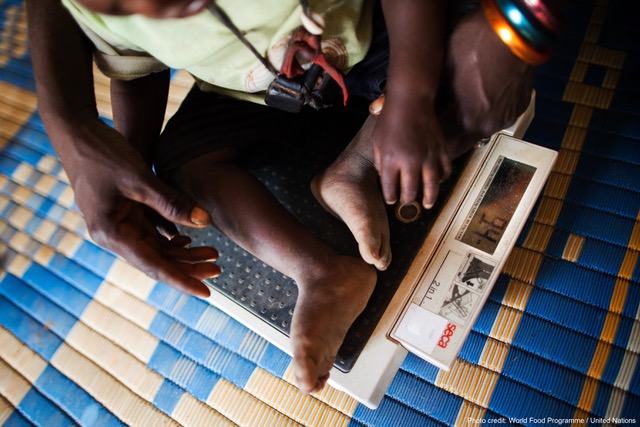
Progress has been made but more needs to be done. It is a cliché NGO response whenever new data is released, striking a cautious balance between recognising global efforts while sounding an urgent call to action. I would go one further in response to the Global Nutrition Report (GNR) published today – progress has been made and all of it now hangs in the balance.
The report is published against the backdrop of COVID-19 – a virus that has taken thousands of lives, shut the world down and exposed gross inequities in our health, food and economic systems. It is therefore timely that the theme of this year’s GNR is ‘action on equity to end malnutrition’. For the first time, the report has broken data down to identify the inequities that national statistics inevitably mask. It highlights that “progress on nutrition is not just too slow – it is also deeply unfair.”
One of the findings of the GNR is that wasting can be nine times higher and stunting can be four times higher in different parts of the same country. Unsurprisingly, poorer parts of countries disproportionately shoulder the burden. But there are problems more prevalent among the better off too. Continued breastfeeding up to 1 or 2 years of age is, for example, less common for children in wealthier households or with a more educated mother.
The inequities highlighted in the report will be magnified as the impacts of COVID-19 become more acutely felt. Many of the world’s poorest people cannot work from home. Most governments cannot support furlough schemes. Food prices are soaring. For most people, the threat of hunger and malnutrition is far greater than the virus itself.
Last week, Minister Wendy Morton told Parliament that every percentage point contraction in global GDP from COVID-19 will lead to an additional 4 million stunted children. The IMF is currently predicting a 3% decline in global GDP this year, with a “substantial” risk of a more protracted recession. That’s a best case scenario of 12 million more stunted children – a population the size of New York and LA combined, made up entirely of children facing lifelong health consequences. An undoing of more than five years of progress tackling stunting.
Those children will not be the wealthy among us – they will be the most vulnerable to the inequities in our food and health systems.
The GNR highlights that “the vast majority of people today simply cannot access or afford a healthy diet”. The report places an emphasis on agriculture systems that focus disproportionately on staple grains like rice and wheat rather than producing a broader range of healthier foods, such as fruits, nuts and vegetables.
In addition, the report points out inequities in the affordability of healthy diets. Egg calories in Burkina Faso are, for example, 15 times more expensive than calories from staples, whereas the figure is just 1.9 times in the US. In addition, we are seeing the rise of processed foods, which are being intensively marketed all over the world.
The report’s findings could not come at a more crucial time. It is because of the inequities highlighted in the GNR that COVID-19 threatens to undo more than five years of progress in tackling stunting. The staggering secondary impacts of COVID-19 on nutrition were not inevitable.
I started with a cliché, so let’s end with a cliched note of optimism too. After all, what is the point in laying out grim statistics without a counterweight of hope? We can fix this mess – and we will. And we have an opportunity, with the Nutrition for Growth summit that was due to take place this year. The timing of the summit is now in question but the host nation, Japan, remain committed. DFID are currently “identifying the most appropriate and impactful commitment” they can make.
With the shortcomings of our current food, health and economic systems so nakedly on show, the COVID-19 crisis has given unexpected clarity on what the summit must address. Donors such as DFID will need to make urgent reforms to ensure maximum effectiveness of their nutrition portfolio. But crucially, the summit must facilitate a partnership between countries, aid agencies and the private sector to ensure systemic and sustainable changes that put nutrition at the heart of food and health systems.
The urgency of Nutrition for Growth was never in doubt – let’s not waste the clarity on what it must achieve.